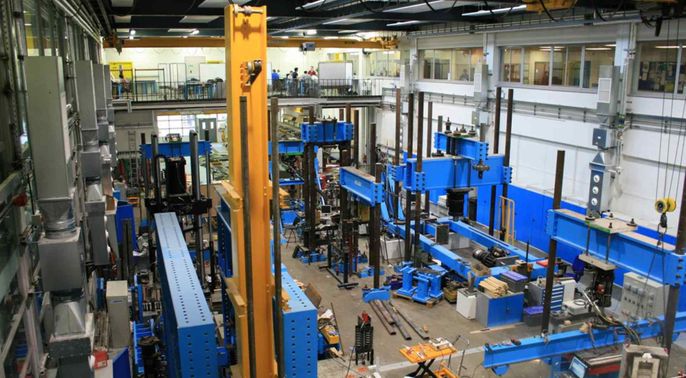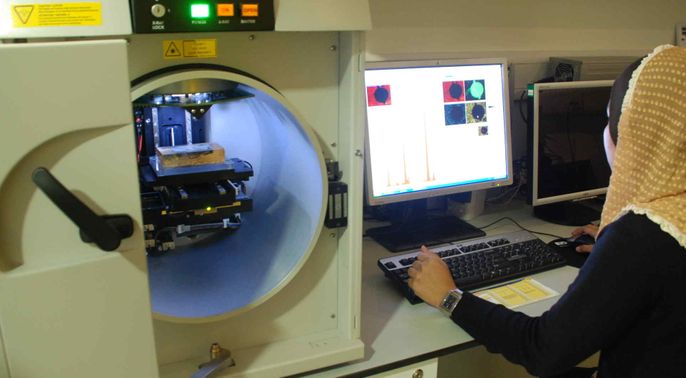lab facilities

Structures Testing Lab
Lab includes a recent £14 M investment in infrastructure and equipment to provide a prestigious facility in the UK university sector for research into engineering structures.
- £1.9 M investment in new servohydraulic test equipment including static, dynamic and impact loading with high speed capabilities.
- Controlled concrete preparation, casting and curing facility.
- New workshop area and equipment.
Structural Lab testing facilities:
- Controlled-rate uniaxial load testing up to 10MN.
- Bi-axial testing of material and structural specimens.
- High rate uniaxial testing of material and structural specimens by impact and rapid hydraulic systems.
- Controlled cylindrical triaxial testing of materials at up to 700 MPa radial stress.
- Cyclic/fatigue testing of large and small scale components.
- Material creep testing.
- Fixing technology for concrete and masonry structures.
- A range of instrumentation and data acquisition systems.
- Manufacture and testing of material and structural specimens, including beams, column, slabs, connections and test frames.
- Controlled environmental specimen conditioning.

Concrete Durability Lab
The lab houses state-of-the-art facilities for investigating all aspects of concrete degradation. Research aims to develop more effective methods for the design, life assessment and repair of concrete structures and is usually based on establishing a better understanding of deterioration processes.
Concrete Durability Group capabilities include:
- Simulated/accelerated environmental exposure.
- Assessment/monitoring of corrosion and concrete deterioration.
- Measurement of the pore structure and mass transport properties of concrete.
- Advanced micro-structural imaging including optical microscopy, fluorescence microscopy, scanning electron microscopy and laser confocal microscopy and expertise in image analysis and 3D visualisation.
- Compositional analysis of cement and concrete using energy dispersive X-ray spectrometry and micro X-ray fluorescence spectrometry.
- Computer-based modelling of transport and deterioration.
Spotlights - A brief focus on how the laboratory has been used to provide experimental data to validate research findings
- Data validation for predictive methods being applied to the behaviour of coastal armour units
- Study of early-age and long-term cracking in reinforced concrete walls with base restraint and with combined base and end restraint
Contact Structures
Structures
Civil and Environmental Engineering
Skempton Building
Imperial College London
South Kensington Campus
London, SW7 2AZ
Telephone:
+44(0) 207 594 6040
Email: r.bello@imperial.ac.uk
Alternatively view our people lists
We are located in the Skempton Building (building number 27 on the South Kensington Campus Map). How to find us




